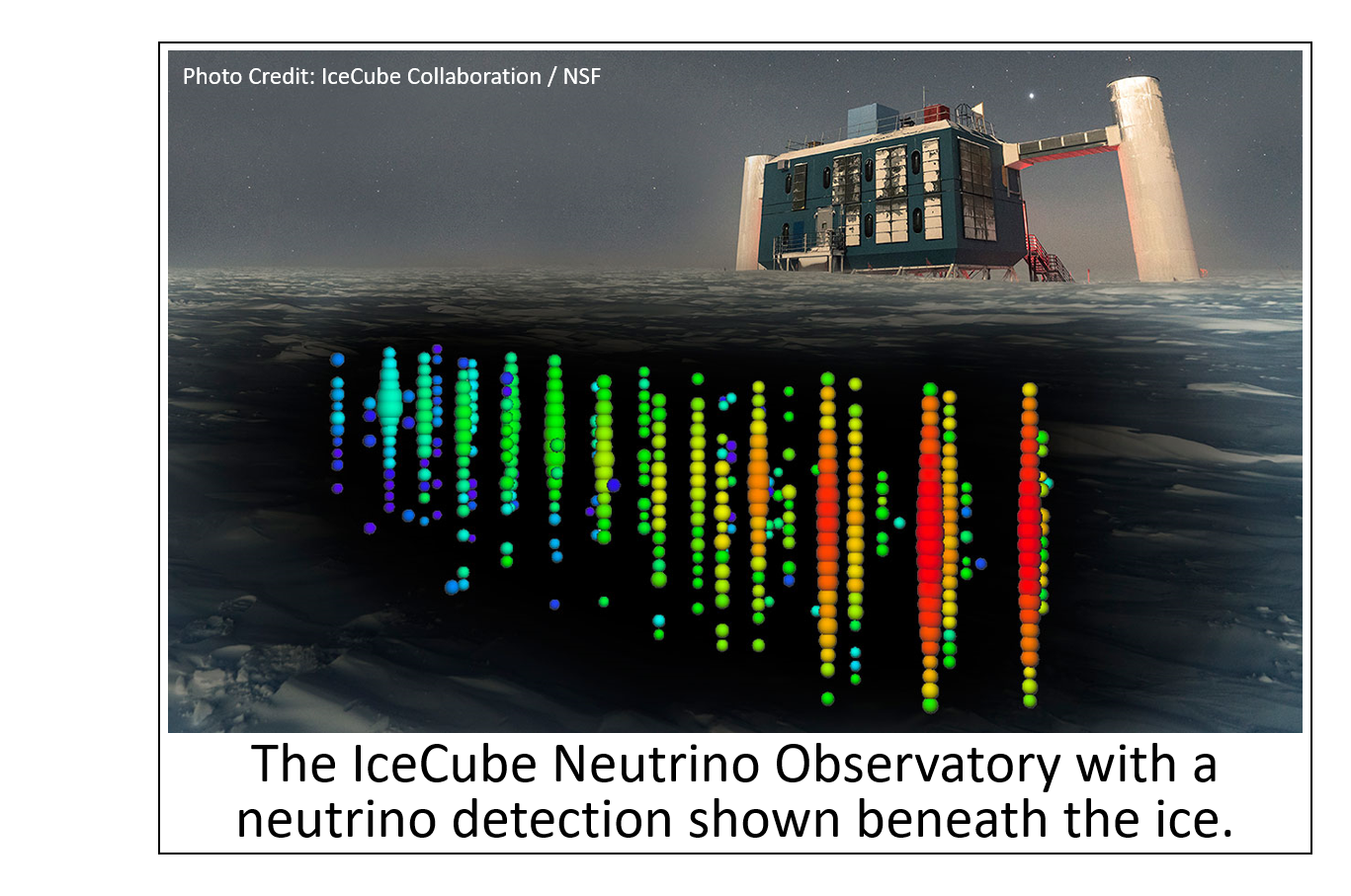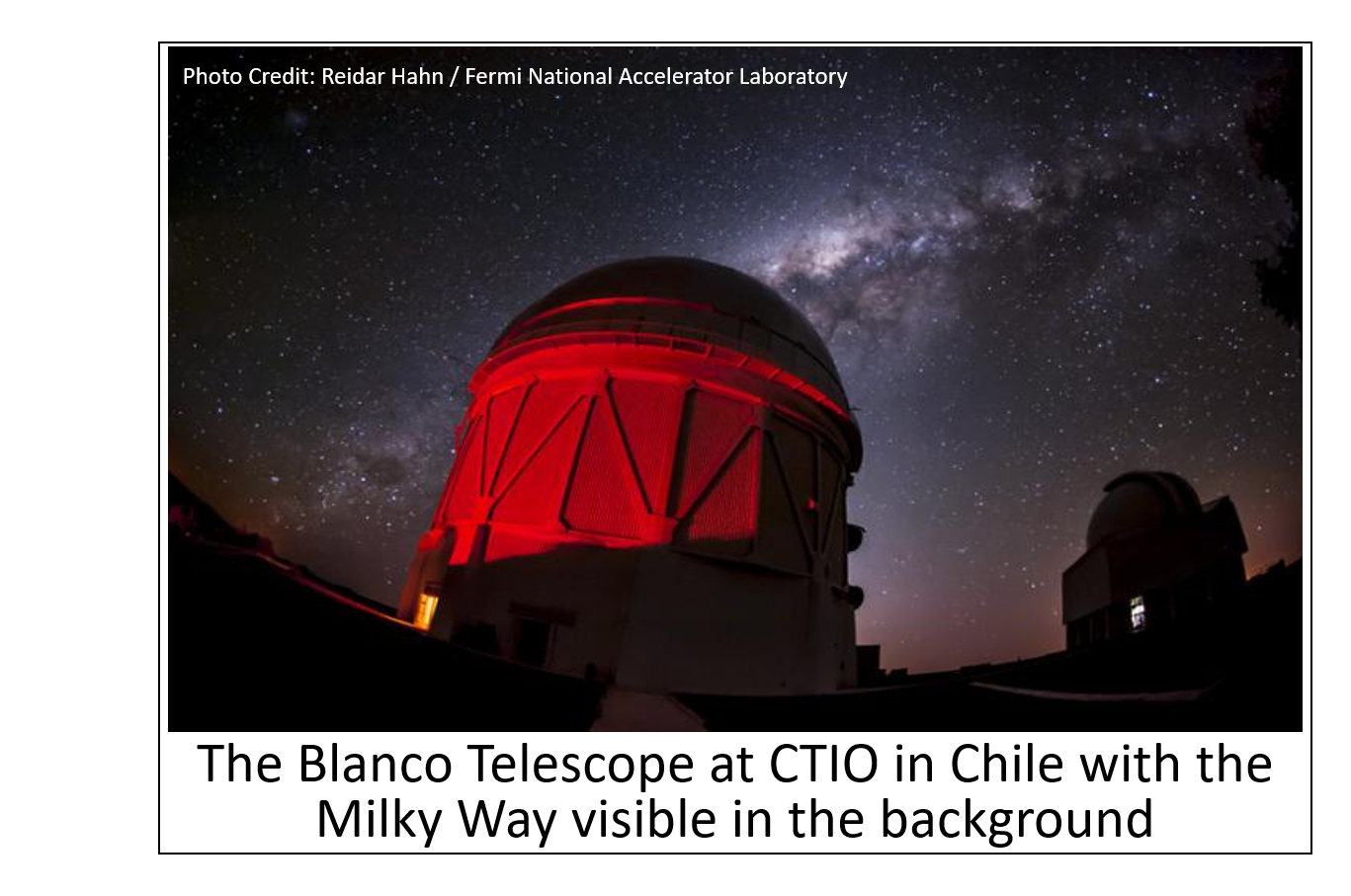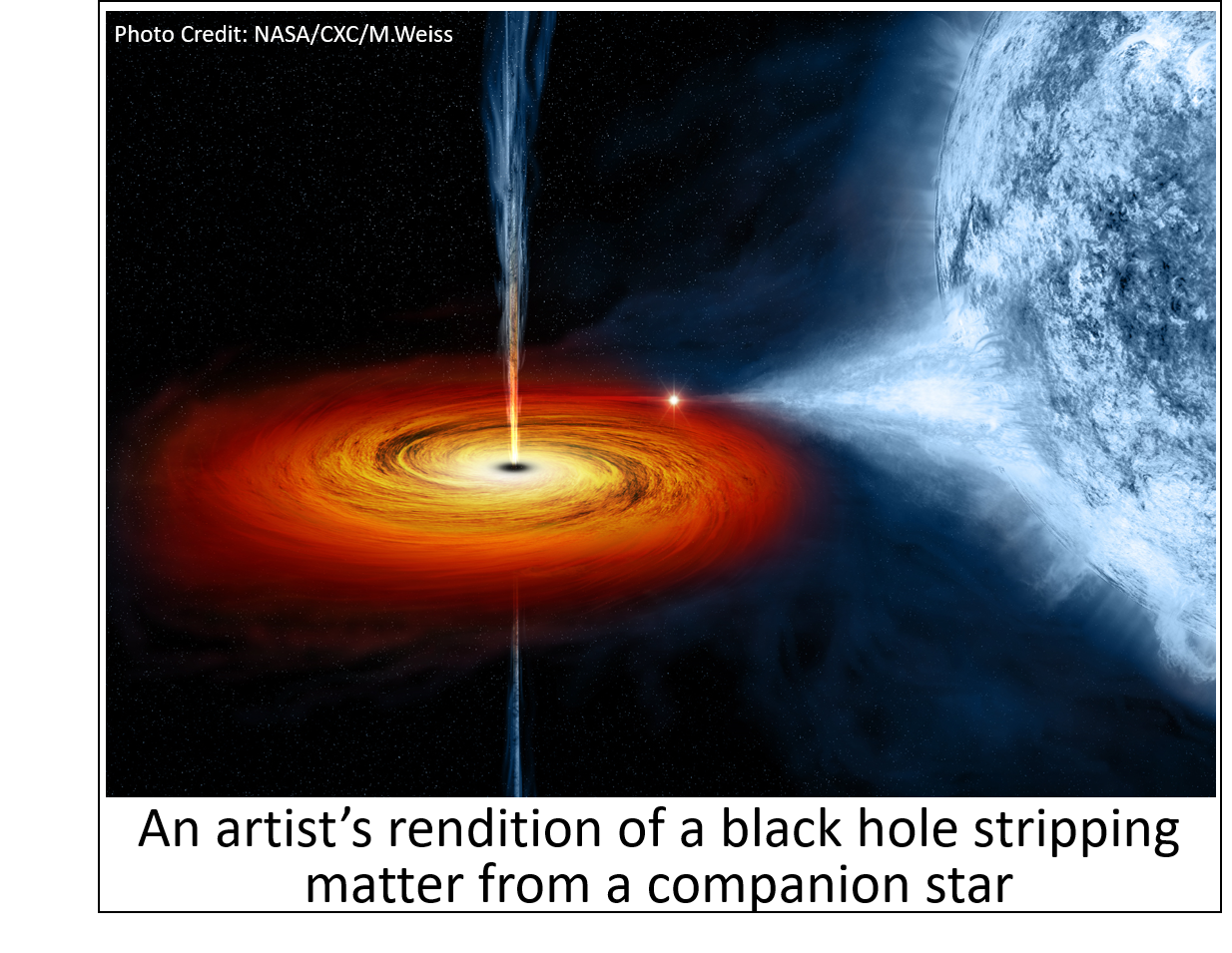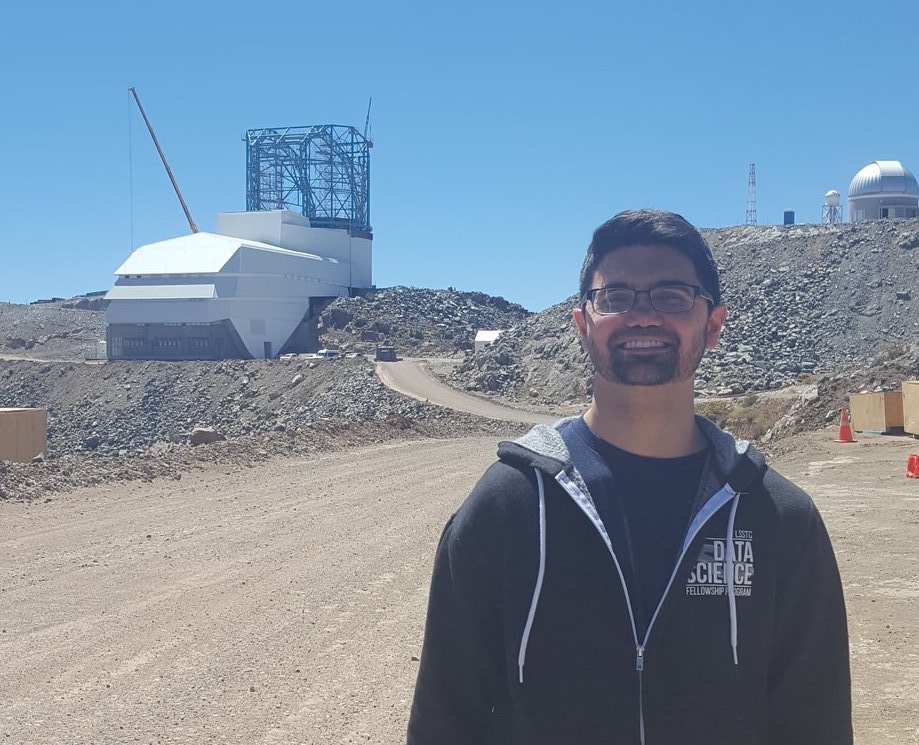Research Portfolio
Thesis-Related Graduate Research
summary about thesis
Discovering Exploding Stars Undergoing Strong Gravitational Lensing with Neural Networks
Summary
Detecting Light from Collisions of Black-Hole-like Astrophysical Objects
Summary
Further Reading
- A popular science article featuring the work of our team.
- My publication (Journal Article or Free ArXiv Preprint) on for this project.
Revealing the Unknown Astrophysical Sources of High‐Energy Neutrinos
 Since October 2017, I have been working to try to identify the sources of high-energy neutrinos detected by the IceCube Neutrino Observatory at the South Pole. So far, there have been about 100 of these neutrinos, but only two have had their sources discovered. Neutrinos are very hard to detect particles, but when they pass through the Antarctic ice they emit radiation, allowing researchers to indirectly find the path the neutrino traveled through the ice. By tracing the path of interactions in the ice, IceCube can tell approximately where in the sky the neutrino came from, and this is where my focus lies.
Since October 2017, I have been working to try to identify the sources of high-energy neutrinos detected by the IceCube Neutrino Observatory at the South Pole. So far, there have been about 100 of these neutrinos, but only two have had their sources discovered. Neutrinos are very hard to detect particles, but when they pass through the Antarctic ice they emit radiation, allowing researchers to indirectly find the path the neutrino traveled through the ice. By tracing the path of interactions in the ice, IceCube can tell approximately where in the sky the neutrino came from, and this is where my focus lies.
Something in space, most likely far outside our galaxy, must have emitted the neutrino that IceCube detected, and many researchers share the common goal of finding the neutrinos’ origins. One hypothesized class of neutrino sources is a collapsing star. The violent nature of supernovae and composition of the star leading up to the explosion cause the emission of both neutrinos and light. The goal of my research, then, is to use telescopes to observe the part of the sky from which IceCube traced the neutrino’s origin, and to try to find an exploding star by looking for the light that was emitted at the same time and from the same place as the neutrino.
 My collaborators and I, as part of the Dark Energy Survey, use the Blanco 4-m Telescope located at the Cerro-Tololo Inter-American Observatory in Chile. After receiving a neutrino alert and sky location from IceCube, we take pictures of the part of the sky of interest using the 570 Megapixel Dark Energy Camera (DECam) over approximately a three week period. We then subtract the images pixel-by-pixel from previous images of that same part of the sky to see if anything is significantly brighter than expected–like a recently exploded star would be.
My collaborators and I, as part of the Dark Energy Survey, use the Blanco 4-m Telescope located at the Cerro-Tololo Inter-American Observatory in Chile. After receiving a neutrino alert and sky location from IceCube, we take pictures of the part of the sky of interest using the 570 Megapixel Dark Energy Camera (DECam) over approximately a three week period. We then subtract the images pixel-by-pixel from previous images of that same part of the sky to see if anything is significantly brighter than expected–like a recently exploded star would be.
A major challenge for this project is that a lot of things (typically several thousand) can change in the region of the sky we point the telescope at: there can be asteroids passing through our line-of-sight, galaxies can flare as their central black holes devour nearby stars and dust, and there can even be many supernovae that we detect that are unassociated with the neutrino. I have played a significant role in developing an automated procedure for sifting through the thousands of transient objects to pick out the supernovae that are the correct chemical composition and exploded at the correct time to have plausibly been the source of the neutrino IceCube detected. To construct our selection procedure, I have used supernovae simulations, machine learning algorithms, and several data analysis and statistical tools; if you’re interested in a more-detailed descritption of the analysis methods, please reach out!
Further Reading
- A popular science article about this project that was written by an undergraduate student I advised, Jacqueline Beran.
- My publication (Journal Article or Free ArXiv Preprint) on for this project.
Contributions to Other Research Projects
summay
What telescopes are needed to optimize the measurements of the rate of expansion of the Universe?
summary
Undergraduate Research
High-Energy Particle Physics Phenomenology
Electrons and neutrinos belong to a class of subatomic particles called leptons, and one special property of leptons for which no contradicting evenidence has been found is known as the conservation of lepton flavor. Essentially, during a collision between particles that involves leptons, the number of electorn-like particles will remain constant, as will the numbers of other members of the lepton class. One discovery that made researchers rethink the conservation of lepton flavor was neutrinos having mass. Because neutrinos have mass, they exist as a mix of the quantum states of all three of the neutrinos that belong to the lepton class, and they can also oscillate from one state to another. If neutrinos can switch between the different lepton types, then we now have reason to suspect that lepton flavor conservation may not be an inherent law of physics.
For my work in this field, I helped to quantify how likely it is to observe a particle collision that violates lepton flavor conservation at the Large Hadron Collider (LHC). We used simulation tools to calculate the observability of a lepton-flavor-violating collision compared to the observability of lepton-flavor-conserving processes that would look similar in the detector. This comparison, coupled with the fact that we have yet to observe lepton flavor violation at the present LHC energy level, allowed us to understand the size of the operators that would govern the underlying physics of lepton-flavor-violating interactions.
Click here to see the paper we published!
X-ray Astronomy and Neutron Stars
Neutron stars are home to some of the most exotic matter and physics in the entire universe. They are formed when stars roughly between 8 and 30 times the mass of the Sun reach the end of their lives and explode. With the right amount of mass, the explosion is powerful enough to force fast-moving protons and electrons together to form neutrons, but not strong enough to form a black hole. After the explosion, a very dense and small object that is believe to be composed of mostly neutrons is left behind, and we call this object a neutron star. To give a sense of scale, neutron stars are only about 30 kilometers in diameter, which is about the size of a large city like Detroit, MI, but weigh more than the entire sun. They are so dense that one teaspoon of neutron star matter would weigh roughly the same amount as Mount Everest.
 Now because neutron stars are so dense, if they happen to get close to a normal star, the neutron star’s gravitational pull will start to rip material off of the companion star, much like a black hole devours everything around it. The matter will form a disk around the neutron star as it gets closer to the point of settling on the surface, and luckily because the neutron star is not dense enough to suck in light like black holes, researchers are able to observe this process known as accretion.
Now because neutron stars are so dense, if they happen to get close to a normal star, the neutron star’s gravitational pull will start to rip material off of the companion star, much like a black hole devours everything around it. The matter will form a disk around the neutron star as it gets closer to the point of settling on the surface, and luckily because the neutron star is not dense enough to suck in light like black holes, researchers are able to observe this process known as accretion.
Observing the light coming from the disk can yield a lot of information about the neutron star. We observed the neutron star binary system known as Serpens X-1, and by specifically looking at the light coming from iron atoms in the disk, we were able to determine the speed of the matter in the accretion disk. The speed of the matter in the disk has a direct relationship with the proximity of the disk to the neutron star, so by doing this calculation we were able to measure the inner radius of the accretion disk. Finally since the neutron star must be entirely contained by the disk, this measurement gave us a maximum possible size for the neutron star itself. We also were able to show that the size of the inner radius of the accretion disk does not change as the light from the disk gets brighter and fainter, which was a new finding in the field.
Click here to see the paper we published!
Mathematics and Population Modelling
This was my first research project ever! I analyzed the systems of equations that represent the population dynamics of predator-prey and competing-species ecological relationships. Specifically, I used linearization techniques to obtain approximate solutions to the systmes of differential equations. These techniques had been used before to understand these systems, but I was able to deepen the level of understanding of these relationships by developing a method for determining the approximated long-term dynamics of the populations based on just a few numbers. For example, using my work, it is possible to determine whether a predator-prey relationship will result in the extinction of the predator, the extinction of the prey, or a cyclic balance between the two populations. To find this end result, all that is required is the birth and death rates of the two populations, as well as the rate at which the predator can successfully catch the prey. Once that information is known, it is not necessary to solve the differential equations; one can compare the numbers based on the rules I developed and automatically understand the ecological system.
Click here to see the paper I published!
Questions?
If you have any questions about my research, please don’t hesitate to reach out!
